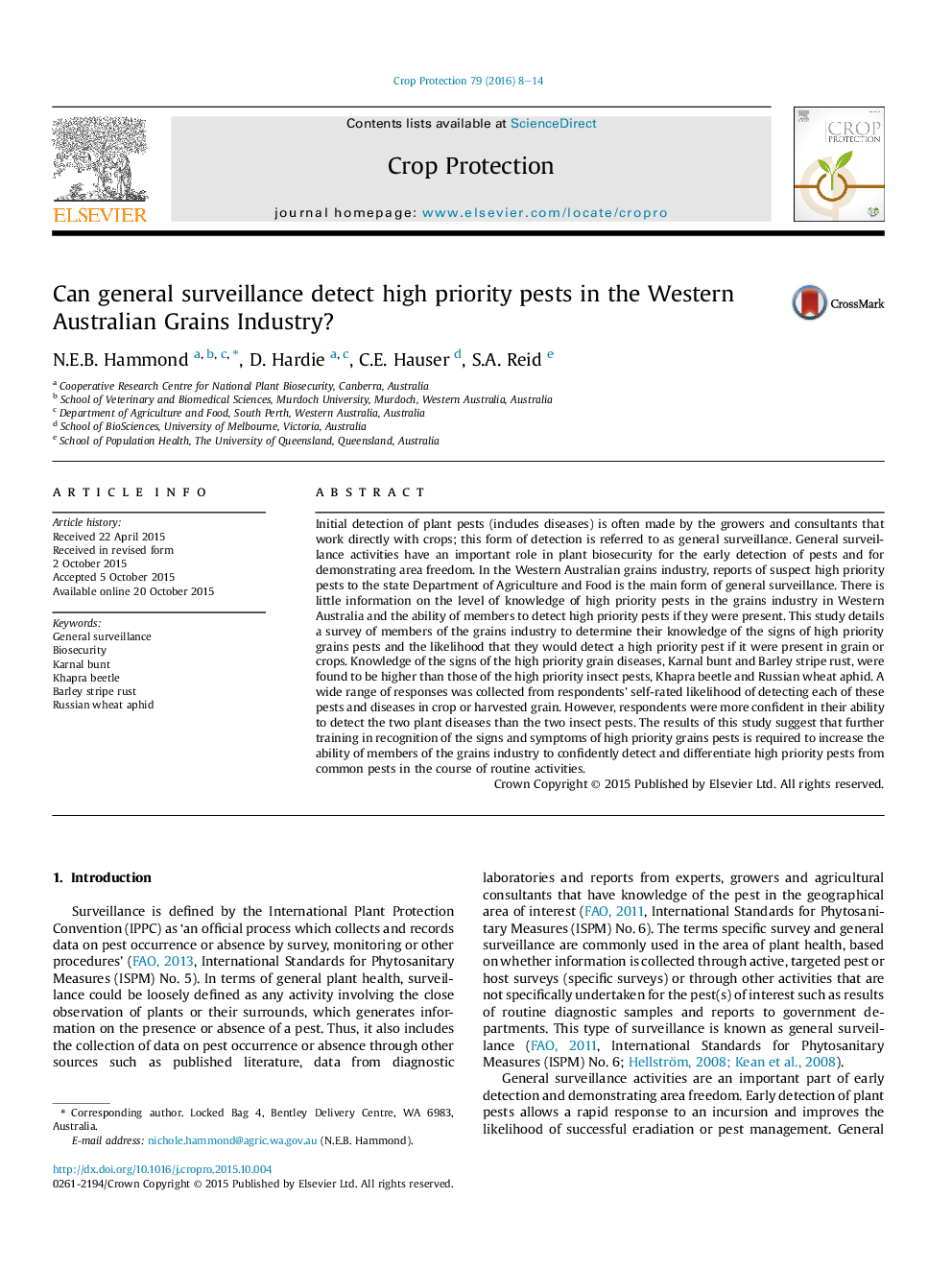| کد مقاله | کد نشریه | سال انتشار | مقاله انگلیسی | نسخه تمام متن |
|---|---|---|---|---|
| 4505606 | 1624308 | 2016 | 7 صفحه PDF | دانلود رایگان |
• Detecting High Priority Pests in the Western Australian Grains Industry.
• General surveillance activities have an important role in plant biosecurity.
• Reports rely on industry members being able to detect suspect high priority pests.
• Knowledge of grain diseases was higher than that of grain insect pests.
• Confidence in ability to detect grain diseases was higher than for insect pests.
Initial detection of plant pests (includes diseases) is often made by the growers and consultants that work directly with crops; this form of detection is referred to as general surveillance. General surveillance activities have an important role in plant biosecurity for the early detection of pests and for demonstrating area freedom. In the Western Australian grains industry, reports of suspect high priority pests to the state Department of Agriculture and Food is the main form of general surveillance. There is little information on the level of knowledge of high priority pests in the grains industry in Western Australia and the ability of members to detect high priority pests if they were present. This study details a survey of members of the grains industry to determine their knowledge of the signs of high priority grains pests and the likelihood that they would detect a high priority pest if it were present in grain or crops. Knowledge of the signs of the high priority grain diseases, Karnal bunt and Barley stripe rust, were found to be higher than those of the high priority insect pests, Khapra beetle and Russian wheat aphid. A wide range of responses was collected from respondents’ self-rated likelihood of detecting each of these pests and diseases in crop or harvested grain. However, respondents were more confident in their ability to detect the two plant diseases than the two insect pests. The results of this study suggest that further training in recognition of the signs and symptoms of high priority grains pests is required to increase the ability of members of the grains industry to confidently detect and differentiate high priority pests from common pests in the course of routine activities.
Journal: Crop Protection - Volume 79, January 2016, Pages 8–14
